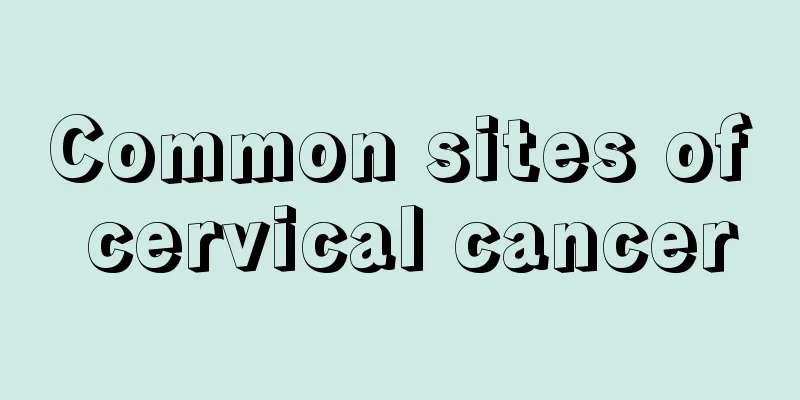Breast cancer patients must know: research proves that sleep is related to cancer metastasis! Cancer cells are "involuted"

|
Cancer is one of the leading causes of death worldwide and has become a public health issue that seriously threatens human health. At present, breast cancer has surpassed lung cancer to become the world's number one cancer. The "2020 Global Cancer Burden Report" released by the World Health Organization's International Agency for Research on Cancer shows that there are as many as 2.26 million new cases of breast cancer worldwide. Usually, if breast cancer can be detected early, most patients will get better treatment effects. Once the cancer begins to metastasize, the difficulty of treatment will be "even greater." Working at sunrise and resting at sunset is the life rhythm formed by human evolution over tens of thousands of years. Sleep plays a vital role in human health. Recently, research teams from ETH Zurich and the University of Basel have linked the sleep of breast cancer patients with cancer metastasis. The research team found that when breast cancer patients sleep, the cancer cells in their bodies will "roll inward", and their metastasis and spread will accelerate. The research results were published in Nature, with the title "The metastatic spread of breast cancer accelerates during sleep". Screenshot of research paper 1. Study finds higher levels of circulating tumor cells (CTCs) when patients are resting CTC refers to tumor cells that enter the tissues surrounding the primary tumor. Circulating tumor cells exist in the peripheral blood and are transported to distant tissues, adapting to the new microenvironment, and eventually "seeding", "proliferating" and "colonizing" to form metastatic foci. Breast cancer metastases are usually in the bones, lungs, brain or liver. Therefore, the level of CTCs in the blood is also considered an important basis for assessing the degree of tumor metastasis. In the past, it was generally believed that the factors that determine the metastatic ability and generation of CTCs had no obvious characteristics in time, and it was generally believed that CTCs continuously fell off from growing tumors or fell off due to mechanical damage. In this study, in order to investigate the metastatic characteristics of CTC, the researchers recruited 30 female breast cancer patients, 21 of whom had no metastatic breast cancer and 9 had stage IV metastatic breast cancer. All patients participating in the trial were not receiving treatment or had temporarily stopped treatment. Subsequently, the researchers collected blood samples at different times of the day, including the daytime activity period (10:00 AM) and the nighttime sleep period (4:00 AM). Finally, through comparative analysis, it was found that there was a significantly higher CTC level in the blood samples collected during the nighttime sleep period, as high as 78.3%. Percentage of isolated single CTCs, CTC clusters, and CTC-WBC clusters in resting and active breast cancer patients The research team also performed single-cell RNA sequencing analysis on these CTCs, and the results showed that mitosis-related genes were significantly upregulated during sleep at night. Therefore, CTCs that break away from the tumor at night divide faster than during the day and are therefore more likely to form tumor metastases. Based on the above findings, the research team believes that circadian rhythm may affect cancer metastasis. Therefore, the team designed a group of breast cancer tumor mouse models, and constructed hormone receptor-positive breast cancer and triple-negative breast cancer mouse models for in-depth analysis. The results showed that there were more CTCs in the blood samples of mice in the morning. Since mice are active at night and sleep during the day, CTCs are actually higher in content during sleep. Afterwards, the researchers disrupted the mice's circadian rhythm, confusing their rest and activity times. After a period of time, they found that the mice's CTC levels still increased when they rested and decreased when they were active. CTC content in mice after circadian rhythm disruption 2. Circadian hormones determine the generation and proliferation of CTCs The proliferation of CTCs in vivo is affected by the circadian rhythm, so can rhythm-related hormones regulate CTC metastasis? Based on this question, the researchers found that compared with control mice, day and night reversal can lead to a significant decrease in the number of circulating cells, while melatonin can induce a significant increase in the number of circulating cells, but if a melatonin inhibitor is added, the number of circulating cells in the blood will decrease. Therefore, this study proves that the escape of circulating tumor cells from the original tumor is controlled by hormones such as melatonin. 3. Breast cancer patients please sleep peacefully Professor Nicola Aceto of ETH Zurich said: "When the patient is asleep, the tumor wakes up. This finding suggests that clinical practice needs to systematically record the sampling and detection times of cancer patients undergoing tissue biopsies to obtain more comparable data." Therefore, the research team believes that the spontaneous generation of CTCs with a high tendency to metastasize does not occur continuously, but is concentrated during the patient's sleep period. However, the results of this study do not mean that sleep should be regarded as the "enemy" of breast cancer patients. Breast cancer cells are more active at night may depend on many factors that remain to be studied. Studies have shown that cancer patients who usually sleep less than 7 hours a night have a higher risk of death, and in this study, the cancer metastasized faster in mice after the circadian rhythm was disrupted. In summary, breast cancer patients do not need to worry too much about the results of this study. The results only suggest that circadian rhythm control methods can be used to characterize and treat breast cancer to minimize variation. In addition, future studies on tumors will likely record the time of biopsy samples to ensure data accuracy. In the future, researchers will also study whether different types of cancer behave similarly to breast cancer, and how to choose appropriate cancer treatments in order to achieve the best therapeutic effect during sleep. Text and layout by Yang Yining |
<<: Isn’t cholera a Class A infectious disease? Why are the cases at Wuhan University not dangerous?
Recommend
Can I eat Spanish mackerel during menstruation?
Spanish mackerel is a deep-sea fish. Its meat act...
What to do with scars after breast fibroid surgery?
Breast fibroma is a very serious disease. Patient...
Here are four things you need to know about pregnancy preparation!
Author: Wang Xin, Chief Physician, Beijing Obstet...
Are the days long and the nights short or are the days short and the nights long during the Spring Equinox? What are the three phases of the Spring Equinox?
The Spring Equinox is a very important solar term...
What is Mexico's beautiful name? What gulf is Mexico located on?
Mexico is a federal republic in North America. Me...
Can I get pregnant if the follicle does not rupture?
Women need to pay special attention to ovulation ...
Tofu pudding for pregnant women
Pregnant women must pay attention to their diet d...
Can I eat kelp if I have irregular menstruation?
Can I eat kelp if I have irregular menstruation? ...
Pink blood one week pregnant
Generally, it is not possible to have blood durin...
How is uterine cancer detected?
Up to now, humans have not fully understood the a...
What to do if your belly gets hot during pregnancy
A pregnant woman will be cared for and valued by ...
What is the cause of sudden bleeding in 6 weeks of pregnancy?
Many women will experience sudden bleeding when t...
How to deal with gynecological uterine cold?
Nowadays, various gynecological diseases are freq...
Remedies for getting caught in the rain during menstruation
There is more rain in the summer. If you are not ...
How to maintain your ovaries in daily life? There are ten ways to maintain your ovaries in daily life.
The ovaries are one of the most important reprodu...









